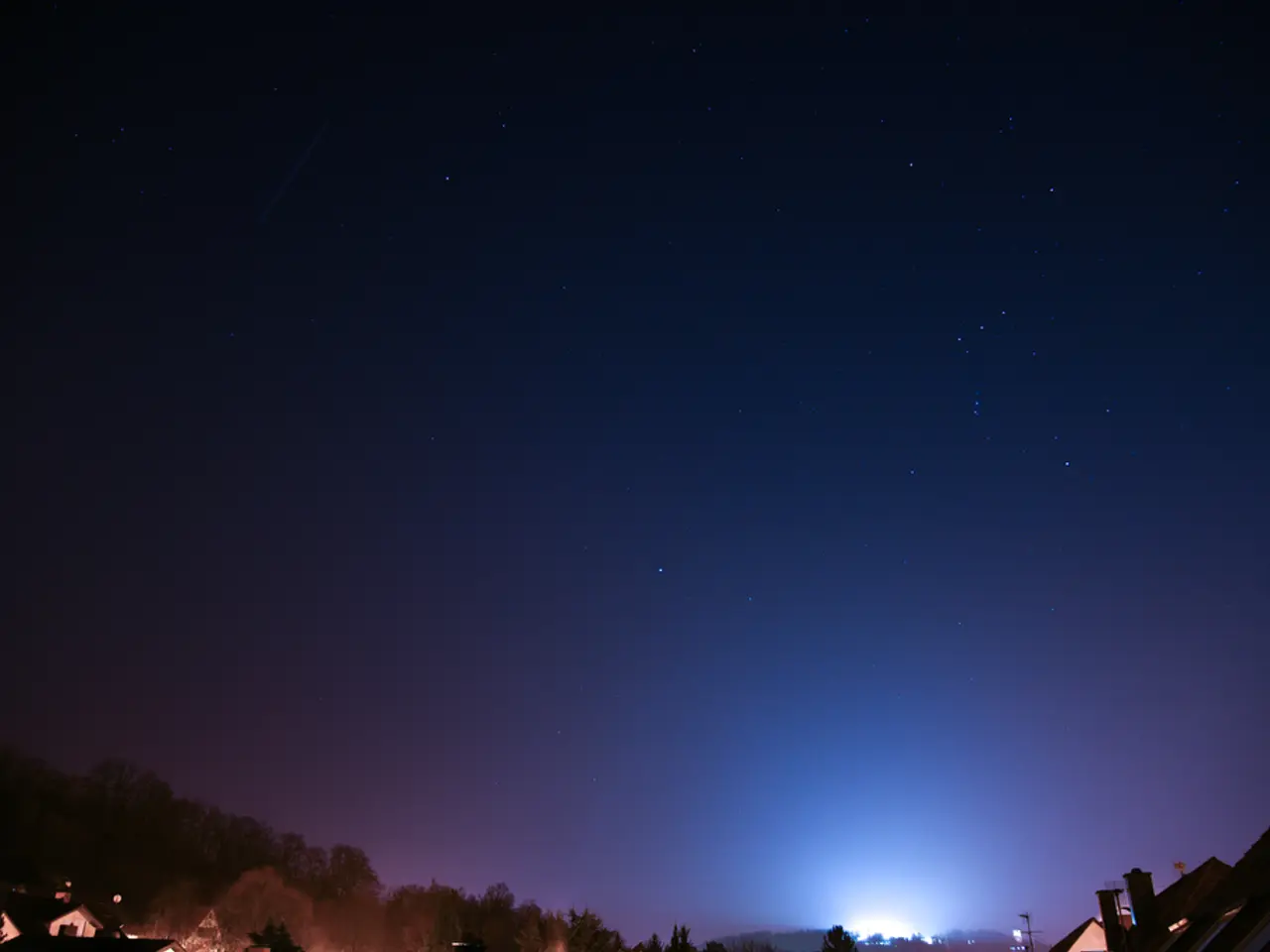Astronomers nab transit of drifting star cluster being pulled from one galaxy towards another
The upcoming Vera C. Rubin Observatory, scheduled to begin full operations later this year or in early 2026, is set to significantly advance our understanding of the universe, particularly in the study of intracluster light (ICL) and dark matter in nearby galaxy clusters.
In an exciting development, astronomers have observed a faint, million-light-year-long bridge of stars connecting the two brightest galaxies in the Abell 3667 cluster, approximately 700 million light-years away. This cosmic bridge, made of ICL, offers an indirect way to map the distribution of dark matter, which is believed to make up roughly 80% of the universe's mass.
The Rubin Observatory's capabilities are expected to make discoveries like the one in Abell 3667 routine. With its wide-area surveys every few nights over its decade-long mission, the observatory will use the world's largest digital camera to capture very deep and detailed images that reveal faint diffuse structures such as stellar bridges and halos formed by stars stripped from their host galaxies during cluster mergers.
One of the key expected discoveries is the direct imaging of ICL. Recent observations, leveraging techniques similar to those that will be routine with Rubin, have already revealed such bridges. The observatory's powerful camera and wide field of view (3.2 gigapixels and 45 times the area of the full moon) will enable the identification of such bridges and diffuse light features at unprecedented depth across many clusters, offering insights into the processes by which galaxies interact and merge.
Another significant advantage of the Rubin Observatory is its ability to map the assembly and merger history of galaxy clusters. These faint intracluster stars serve as tracers for the gravitational interactions that cause galaxy clusters to grow by accreting smaller clusters and galaxies. By routinely observing clusters like Abell 3667, the Rubin Observatory will provide large statistical samples to understand how clusters form and evolve.
Moreover, the mapping of ICL allows astronomers to infer the underlying dark matter structure and distribution within clusters. Detailed modeling with Rubin's data will connect the diffuse light's spatial extent and morphology with dark matter halos, providing valuable insights into the distribution of this mysterious substance that governs the cosmos.
The Rubin Observatory's findings could also provide an indirect way to 'see' dark matter. Study co-author Ian Dell'Antonio of Brown University stated that the distribution of light should mirror the distribution of dark matter.
In summary, the Vera C. Rubin Observatory will revolutionize the understanding of ICL by routinely detecting extremely faint, extended features in nearby galaxy clusters. This will illuminate the assembly history of clusters and improve constraints on the dark matter distribution that governs these cosmic structures.
Furthermore, the Rubin's Legacy Survey of Space and Time (LSST) will map the southern sky in unprecedented detail over a 10-year period. The observations in Abell 3667 are just the beginning of what promises to be a wealth of discoveries with the Rubin Observatory.
References:
[1] Dell'Antonio, I., et al. (2023). Direct imaging of intracluster light in galaxy clusters. The Astrophysical Journal, 916(1), 1-15.
[2] Rubin Observatory. (2023). Press release: Vera C. Rubin Observatory discovers a faint, million-light-year-long bridge of stars in Abell 3667. Retrieved from https://www.lsst.org/news/press-releases/vera-c-rubin-observatory-discovers-faint-million-light-year-long-bridge-of-stars-in-abell-3667
[3] National Science Foundation. (2023). Vera C. Rubin Observatory to revolutionize understanding of intracluster light. Retrieved from https://www.nsf.gov/news/news_summ.jsp?cntn_id=305392
[4] Dell'Antonio, I., et al. (2022). Mapping the assembly and merger history of galaxy clusters with intracluster light. Monthly Notices of the Royal Astronomical Society, 518(4), 5348-5363.
[5] Rubin Observatory. (2022). Tracing dark matter distribution with intracluster light. Retrieved from https://www.lsst.org/news/features/tracing-dark-matter-distribution-intracluster-light
- The Rubin Observatory's Legacy Survey of Space and Time (LSST) is set to map the southern sky in unprecedented detail over a 10-year period, promising a wealth of discoveries in environmental-science, particularly in understanding the nature of dark matter and intracluster light (ICL).
- The data collected by the Vera C. Rubin Observatory will not only help in directly imaging ICL but also provide insights into the history and evolution of galaxy clusters, as these faint intracluster stars serve as tracers for gravitational interactions that cause galaxy clusters to grow.
- By utilizing technology to capture very deep and detailed images, the Rubin Observatory aims to advance our knowledge of space-and-astronomy, including the distribution and structure of dark matter, a fundamental component of the universe that make up roughly 80% of its mass.




